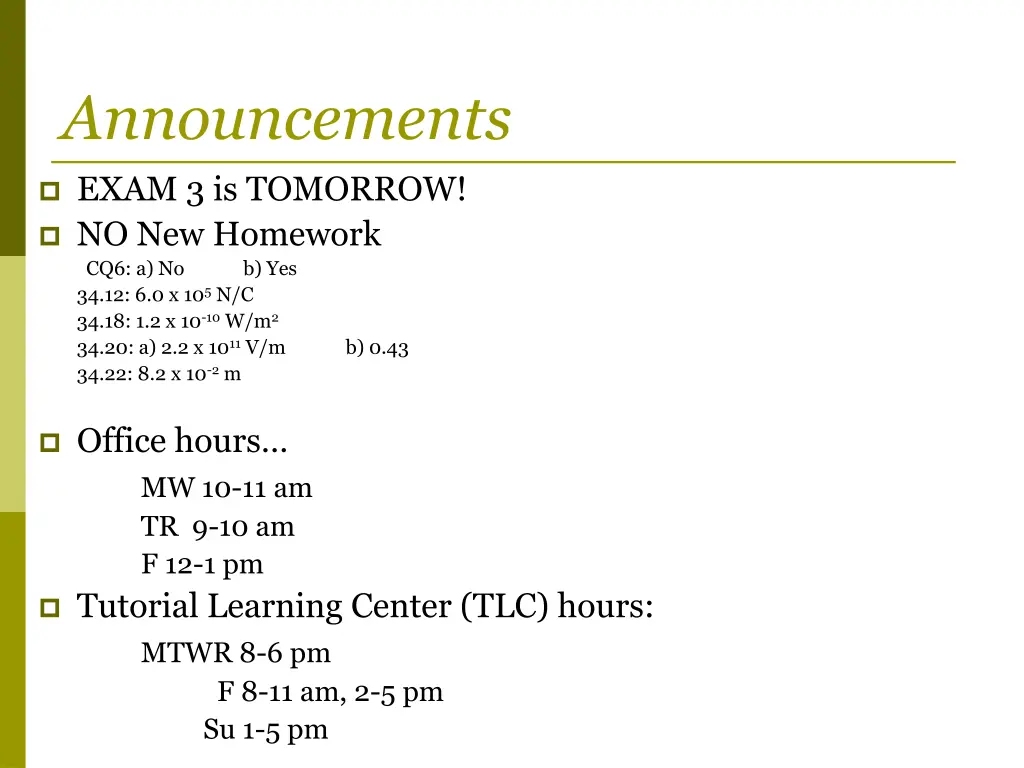
Electromagnetic Waves and Fields Overview
Explore the principles of electromagnetic waves and fields, including Malus's Law, polarizers, analyzers, and electromagnetic induction. Discover how polarizing filters affect light intensity and how electromagnetic waves are polarized. Learn about the B-Field in magnetism and electromagnetic wave properties.
Download Presentation

Please find below an Image/Link to download the presentation.
The content on the website is provided AS IS for your information and personal use only. It may not be sold, licensed, or shared on other websites without obtaining consent from the author. If you encounter any issues during the download, it is possible that the publisher has removed the file from their server.
You are allowed to download the files provided on this website for personal or commercial use, subject to the condition that they are used lawfully. All files are the property of their respective owners.
The content on the website is provided AS IS for your information and personal use only. It may not be sold, licensed, or shared on other websites without obtaining consent from the author.
E N D
Presentation Transcript
Announcements EXAM 3 is TOMORROW! NO New Homework CQ6: a) No b) Yes 34.12: 6.0 x 105N/C 34.18: 1.2 x 10-10W/m2 34.20: a) 2.2 x 1011V/m 34.22: 8.2 x 10-2m b) 0.43 Office hours MW 10-11 am TR 9-10 am F 12-1 pm Tutorial Learning Center (TLC) hours: MTWR 8-6 pm F 8-11 am, 2-5 pm Su 1-5 pm
Maluss Law Consider polarized light of intensity I0 approaching a polarizing filter The component of the E-field that is polarized parallel to the axis is transmitted. The transmitted intensity is
Quiz Question 1 A vertically polarized light wave of intensity 1000 mW/m2 is coming toward you, out of the screen. After passing through this polarizing filter, the wave s intensity is 707 mW/m2. 1. 2. 500 mW/m2. 3. 333 mW/m2. 4. 250 mW/m2. 0 mW/m2. 5.
Polarizers and Analyzers Malus s law can be demonstrated with two polarizing filters The first, called the polarizer, is used to produce polarized light of intensity I0. The second, called the analyzer, is rotated by angle relative to the polarizer.
Polarizers and Analyzers The transmission of the analyzer is 100% when = 0 , and steadily decreases to zero when = 90 . Two polarizing filters with perpendicular axes block ALL the light. If the incident light on a polarizing filter is unpolarized, half the intensity is transmitted:
Outline CH 32 The B-Field Magnetism The Discovery of the B-Field The Source of the B-Field: Moving Charges The B-Field of a Current Magnetic Dipoles The Magnetic Force on a Moving Charge Magnetic Forces on Current-Carrying Wires Forces and Torques on Current Loops CH 33 Electromagnetic Induction Induced Currents Motional emf Magnetic Flux Lenz s Law Faraday s Law CH 34 Electromagnetic Fields and Waves Electromagnetic Waves Properties of Electromagnetic Waves Polarization
QQ1 Unpolarized light, traveling in the direction shown, is incident on polarizer 1. Does any light emerge from polarizer 3? Yes. 1. 2. No.
QQ2 The graph shows the magnitude of B that is perpendicular to the plane of a conducting loop. Rank the four regions indicated on the graph according to the magnitude of the emf induced in the loop, from least to greatest. B 2 1, 2, 3, 4 1. 3 1 2. 2, 4, 3, 1 4 3. 4, 3, 1, 2 4. 1, 3, 4, 2 t 4, 3, 2, 1 5.
QQ3 A proton traveling east experiences a B-field that point south. The proton will experience a force in which direction? south 1. 2. north 3. west 4. up down 5.
QQ4 Two parallel wires carrying current in the same direction will: attract each other 1. 2. repel each other 3. exert no force on each other.
QQ5 The magnetic force on a charged particle is in the direction of its velocity: If it is moving in the direction of the field. 1. 2. If it is moving opposite to the direction of the field. 3. If it is moving perpendicular to the field. 4. If it is moving in some other direction. Never. 5.
QQ6 The diagram shows a straight wire carrying a flow of electrons into the page. The wire is between the poles of a permanent magnet. The direction of the magnetic force exerted on the wire is: N S Up. 1. 2. Down. 3. Left. 4. Right. The wire experiences a torque, but no net force. 5.
